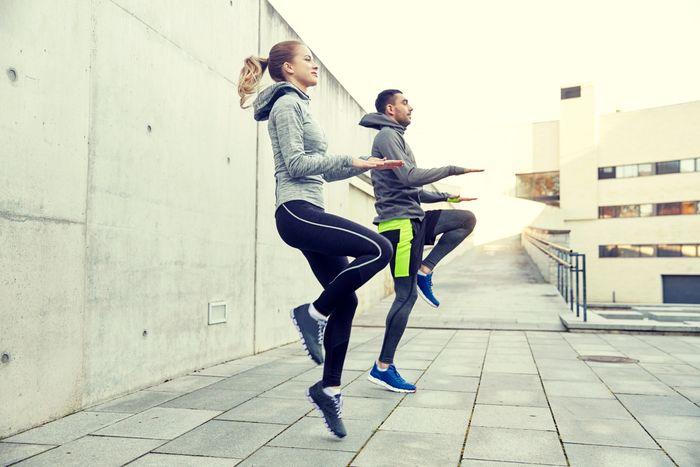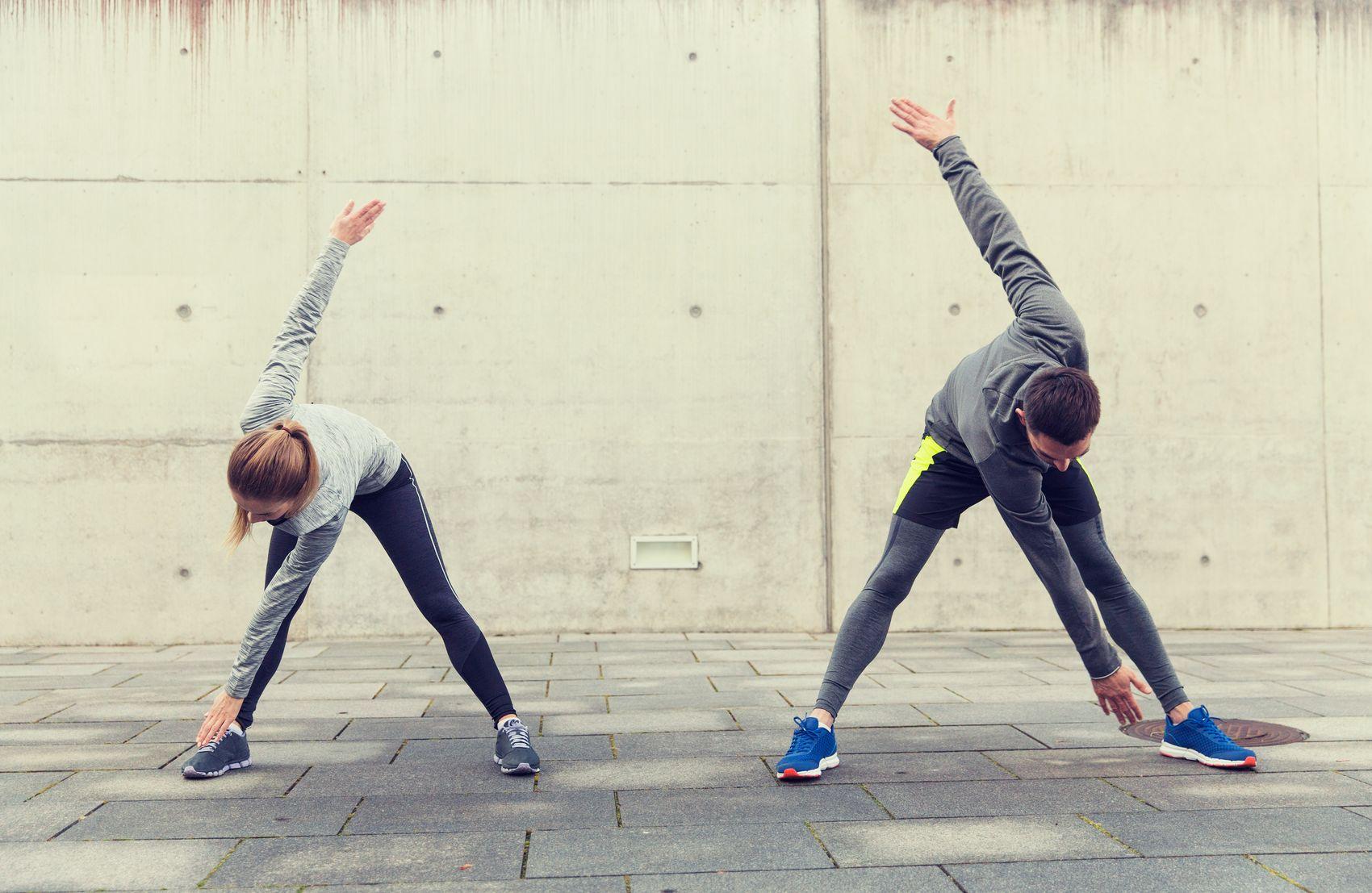A proper warm-up is beneficial for a lot of reasons. For one thing, a warm-up will stimulate blood flow, increase oxygenation to your muscles, loosen up your tissues, prime your central nervous system, get your “head in the game,” and prepare your joints for movement. Together, these benefits can severely cut your risk of injury.
Doing a proper warm-up also increases the effectiveness of your workout once you get your body in gear. Why? Because instead of having to spend the first several minutes of your workout session getting your heart rate up, your heart rate will ALREADY be elevated at 3-2-1 Go—meaning you’ll end up spending MORE time in your ideal heart rate range (whatever that is for your given workout).
You May Also Like: 5 Unique Dynamic Stretches to Loosen Up and Prevent Injury
Consider your warm-up as a small insurance policy for your workout. Even just 5-10 minutes dedicated to getting your body warm and your heart rate up can protect your body and optimize your training.
Small input for bit output? Yeah, we’d consider that a win.

A Proper Warm-Up for a Great Workout
There’s no single consensus on the “best” kind of warm-up—no surprise there, since there’s no single consensus on the best type of workout, either!
Need some inspiration? Follow these tips for a great warm-up so your workout will be as challenging and successful as you could ever dream it to be:
Start with some light cardio.
Hello, blood flow! Hop on your favorite cardio machine and go at a relatively easy pace for about 5 minutes. We particularly love the stair climber, elliptical, bike, or rower for this.
Do some dynamic stretching.
Keep it simple to open up your joints and loosen up your tissues without over-stretching them. We like a few reps of:
- Animal walks (bear crawl, duck walk, crab walk, etc.)
- Burpees
- Arm Swings
- Leg Swings
- Mountain climbers
- High Knees
- Ts, Is, and Ys
- Move through some workout-specific movements.
In general, it’s helpful to perform variations of the specific moves from your workout within your warm-up. This helps groove the appropriate motor patterns and establishes a proper range of motion within the movements you’ll be doing.
For example: squatting today? Do some air squats. Benching? Do a few reps with the empty bar. Your goal is to identify the major muscle groups and movements which will be featured in your workout, then try to incorporate a few simple reps that hit these elements during your warm-up.
Tip: save the foam rolling and static stretching for after your workout. Why? Foam rolling activates your parasympathetic nervous system, aka your body’s relaxation mode (which you don’t want before a tough workout). Meanwhile, static stretching post-workout can help make sure you don’t overstretch your muscles before you use them. So stick to dynamic movements that stimulate blood flow and save those 2-minute hip flexor stretches for when you can check “done” next to your daily workout.
Need some more guidance? Schedule a consult with a PNW personal trainer today!

